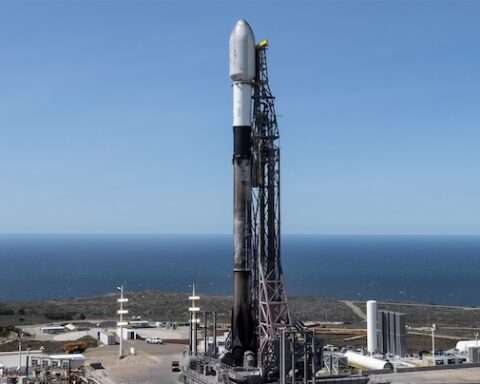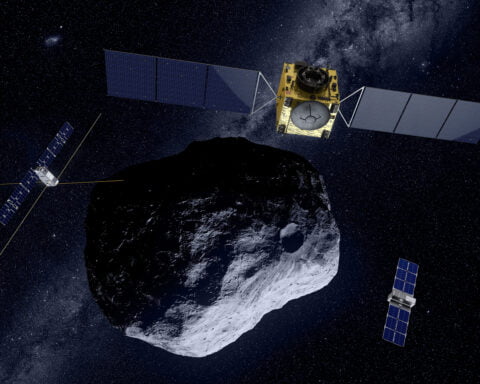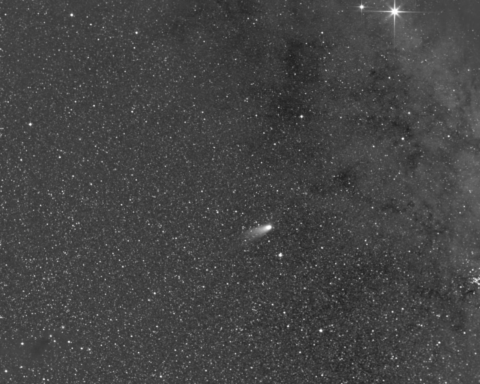On March 14, 2025, SpaceX successfully launched its Crew-10 mission from NASA’s Kennedy Space Center in Florida, marking a pivotal step in bringing home U.S. astronauts Butch Wilmore and Suni Williams, who have been stranded on the International Space Station (ISS) for over nine months.
The Falcon 9 rocket lifted off at 7:03 p.m. EDT, carrying four astronauts—NASA’s Anne McClain and Nichole Ayers, Japan’s Takuya Onishi, and Russia’s Kirill Peskov—to replace the current ISS crew, including Wilmore and Williams.
This launch, covered extensively by BBC, CNN, NBC, Fox News, and other outlets, followed a scrubbed attempt earlier in the week due to technical issues, underscoring the high stakes and political undertones of the mission.
Initially planned as an eight-day test flight aboard Boeing’s Starliner in June 2024, Wilmore and Williams’ extended stay became a saga of engineering challenges and diplomatic wrangling, with their return now set for no earlier than March 19 aboard a SpaceX Dragon capsule.
A Dramatic Launch After Days of Delay
The Crew-10 mission’s journey to liftoff was anything but smooth. Originally scheduled for March 12, the launch was postponed due to a hydraulic issue with a ground support clamp arm on the Falcon 9 rocket, as reported by BBC News. SpaceX engineers worked swiftly to resolve the problem, flushing an air pocket from the system, and by Friday, March 14, all systems were green.
NBC News captured the moment of triumph as the rocket roared into the night sky at 7:03 p.m., its first-stage booster separating flawlessly and landing on a droneship in the Atlantic—a hallmark of SpaceX’s reusable technology. CNN noted the “exceptional” weather conditions that aided the launch, a rare stroke of luck amid a week of uncertainty.
The Dragon spacecraft, carrying the Crew-10 team, is expected to dock with the ISS’s Harmony module around 11:30 p.m. EDT on Saturday, March 15, per NASA’s updates reported by Reuters.
This autonomous docking will temporarily swell the station’s population to 11, as the new crew overlaps with the outgoing team—Wilmore, Williams, NASA’s Nick Hague, and Russia’s Aleksandr Gorbunov—before the latter quartet departs.
Fox News highlighted the mission’s significance as SpaceX’s 14th human spaceflight to the ISS, a testament to the company’s growing role in NASA’s operations.
The Stranded Astronauts: A Nine-Month Odyssey
Butch Wilmore and Suni Williams, both veteran NASA astronauts and former Navy test pilots, launched aboard Boeing’s Starliner on June 5, 2024, for what was meant to be a brief test of the spacecraft’s crewed capabilities.
BBC News recounted how their eight-day mission morphed into an extended stay after Starliner encountered helium leaks and thruster malfunctions during its approach to the ISS. After months of analysis, NASA deemed the spacecraft too risky for their return, opting instead to send it back uncrewed in September 2024, as CNN detailed.
Wilmore and Williams, stranded but resilient, integrated into the ISS crew, assisting with maintenance, experiments, and even mundane tasks like fixing a toilet, per NBC News.
Their prolonged stay drew global attention, amplified by political rhetoric. Fox News reported President Donald Trump and SpaceX CEO Elon Musk claiming the Biden administration had “abandoned” the duo for political reasons, a narrative NASA refuted.
In a February interview with Fox’s Sean Hannity, Trump quipped “Biden” when asked about the delay, while Musk asserted SpaceX could have retrieved them sooner.
CNN cited a former NASA official dismissing these claims, noting no formal offer for an earlier rescue was ever made. Meanwhile, Wilmore and Williams, speaking to CNN’s Anderson Cooper in February, rejected the “stranded” label, with Wilmore saying, “We’re trained to expect the unexpected.”
Crew-10: The Rescue Team Arrives
The Crew-10 astronauts—Anne McClain, Nichole Ayers, Takuya Onishi, and Kirill Peskov—represent a multinational effort under NASA’s Commercial Crew Program.
NBC News profiled McClain, a seasoned astronaut leading the mission, alongside first-timer Ayers, JAXA’s Onishi, and Roscosmos’ Peskov, highlighting the collaboration between the U.S., Japan, and Russia despite terrestrial tensions.
Their arrival at the ISS will initiate a handover period, expected to last about four days, during which they’ll assume control of station operations, per Reuters.
This crew swap is no ordinary rotation. As BBC News explained, Wilmore and Williams will join Hague and Gorbunov—part of the Crew-9 mission launched in September 2024—aboard the Dragon Endurance capsule for their return.
The capsule, docked at the ISS since September, had two seats deliberately left empty for this purpose, a contingency NASA planned after scrapping Starliner’s return. CNN underscored the logistical complexity, noting weather conditions off Florida’s coast will determine the exact splashdown date, projected for March 19 at the earliest.
Political Undercurrents and Public Perception
The Crew-10 launch was steeped in political subtext. Fox News framed it as a victory for Trump, who, after taking office in January 2025, claimed he ordered Musk to “go get” the astronauts, pressuring NASA to expedite the mission.
BBC News noted NASA’s initial late-March timeline was moved up by two weeks, possibly in response to this pressure, though agency officials like Steve Stich emphasized safety over politics. Stich, manager of NASA’s Commercial Crew Program, expressed relief at the launch, telling BBC, “We’re delighted to bring Butch and Suni home.”
Public reaction, as reflected in posts on X and covered by outlets like The Times of India, oscillated between admiration for the astronauts’ resilience and frustration with the delays.
Critics on X questioned why SpaceX didn’t act sooner, echoing Musk’s claims, while supporters praised the mission’s success as a triumph of ingenuity.
NBC News reported Wilmore and Williams’ stoic acceptance of their fate, with Williams reflecting on how space deepened her appreciation for Earth—a sentiment that resonated widely.
Boeing’s Starliner Setback and SpaceX’s Ascendancy
The mission spotlighted the contrasting fortunes of Boeing and SpaceX. CNN detailed how Starliner’s woes—helium leaks, thruster failures, and months of troubleshooting—undermined Boeing’s bid to rival SpaceX in NASA’s crew transport program.
NASA’s decision to return Starliner empty, as NPR noted, was a blow to the company, leaving SpaceX as the sole provider for this rescue. Fox News commentators seized on this, lauding SpaceX’s reliability and Musk’s leadership, while subtly critiquing Boeing’s struggles as emblematic of broader corporate inefficiencies.
SpaceX’s dominance was further underscored by the Falcon 9’s performance. The New York Times praised the booster’s pinpoint landing, a routine yet awe-inspiring feat that reinforces SpaceX’s cost-effective model.
This reliability has cemented SpaceX’s role as NASA’s lifeline, with Crew-10 marking its latest success in a string of ISS missions, per CBS News.
What Lies Ahead: A Return and Beyond
Once Crew-10 docks, the focus shifts to the handover and return. NASA’s live broadcast, slated for 1:40 a.m. EDT on March 16, will feature welcome remarks for Crew-10 and farewells for Crew-9, including Wilmore and Williams, per NBC News.
Their splashdown off Florida’s coast hinges on weather, with teams monitoring conditions closely, as Reuters reported. A successful return will cap a saga that tested NASA’s adaptability and the astronauts’ endurance.
Looking forward, the mission raises questions about the Commercial Crew Program’s future. BBC News speculated on Boeing’s next steps with Starliner, while CNN analysts predicted SpaceX’s continued dominance, especially with Musk’s influence growing under Trump’s administration.
The Guardian flagged concerns about Musk’s role in federal policy, given his advisory position, suggesting Crew-10’s success could bolster his leverage.
Conclusion: A Homecoming Long Overdue
SpaceX’s Crew-10 launch on March 14, 2025, was more than a routine crew rotation—it was a lifeline for Butch Wilmore and Suni Williams, whose nine-month ISS stay became a symbol of resilience amid adversity.
Drawing from BBC, CNN, NBC, Fox News, and other reports, this mission showcased SpaceX’s technical prowess, NASA’s strategic pivots, and the political currents shaping space exploration.
As the Dragon spacecraft speeds toward the ISS, it carries not just four astronauts but the promise of closure for two others, ending a chapter of uncertainty with a splashdown that will echo far beyond Florida’s shores.
For Wilmore and Williams, the journey home is finally in sight—a testament to human grit and the unyielding pursuit of the stars.






